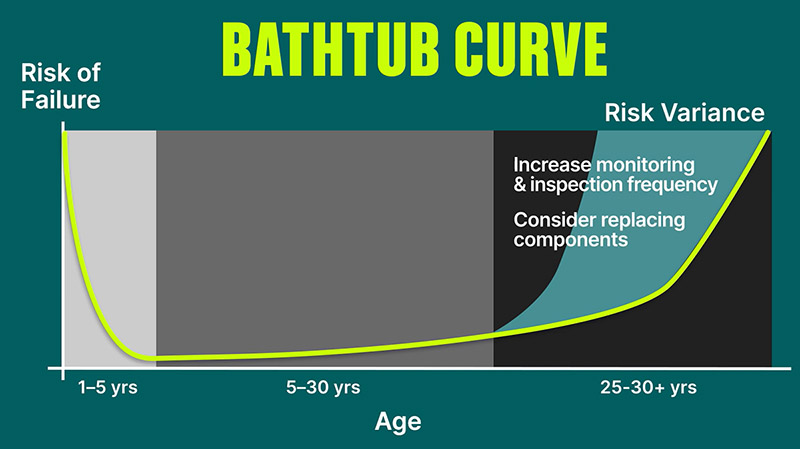When it comes to understanding risks associated with aging fossil plant equipment, the concept of the bathtub curve sits front and center… and with no component more so than a generator unit.
A long-standing illustration of probability modeling, the bathtub curve highlights how- as rotating equipment like a generator reaches late life cycle stages- the risks of failure can not only increase, but can do so almost exponentially.




